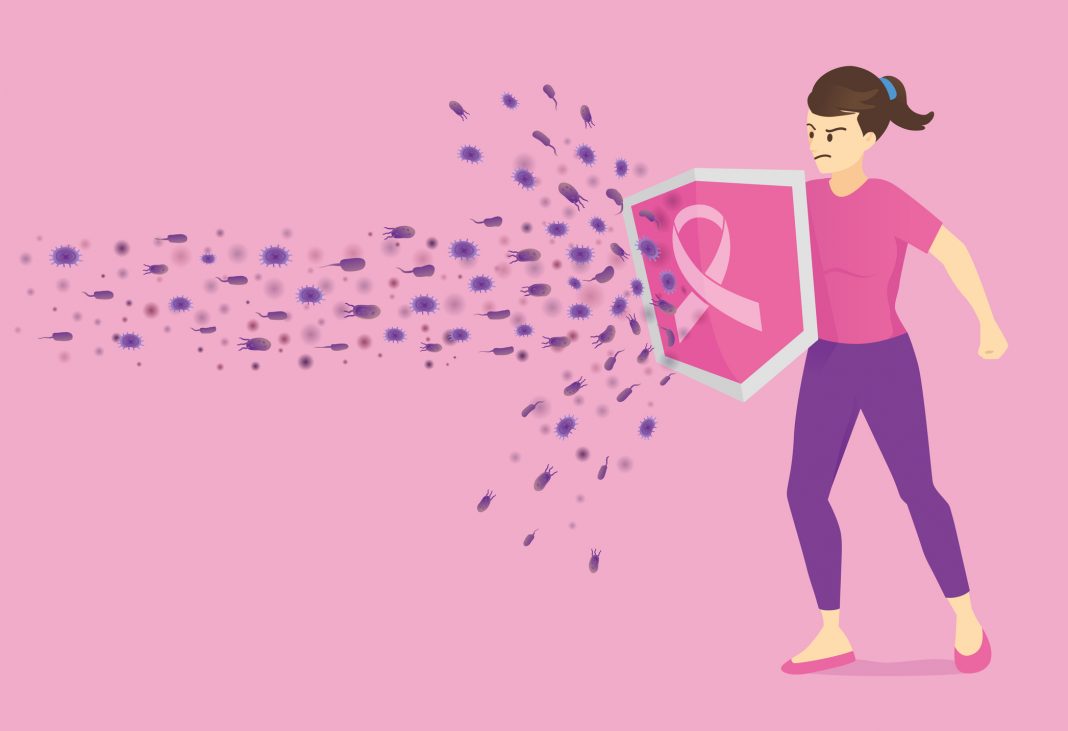Cancer researchers have always understood the power of combination therapies—blending two or more drugs together to fight the heterogeneous nature of tumors has helped push a number of patients into remission. However, scientists typically take a logical approach to drug design, often mixing therapies together that have modes of action that are similar or even in the same therapeutic class. Yet, when classifying cancer, logic is typically not a word that comes to mind, so researchers have begun to think outside the box for compounds that may be useful in thwarting this disease.
Now, investigators at the University of Helsinki have come upon an unlikely drug combination that could be very helpful to a large number of breast cancer patients. The researchers found that cancer cells can be attacked with a drug cocktail that includes the diabetes drug metformin and venetoclax, a BCL-2 protein inhibitor that can induce apoptosis in cancer cells. The research team identified metformin in a search for drugs that could boost the apoptosis-inducing action of venetoclax. Venetoclax has been approved to treat certain leukemias but not yet for the treatment of breast cancer. Findings from the new study were published recently in Nature Communications through an article titled “Pharmacological reactivation of MYC-dependent apoptosis induces susceptibility to anti-PD-1 immunotherapy.”
MYC, a gene with high cancer-initiating potential, is overexpressed in over 40% of breast cancers. While MYC programs breast cancer cells to build more macromolecules (anabolic metabolism) it also creates a metabolic vulnerability by making them more sensitive to a type of cell death known as apoptosis.
“This drug combo exploits specific metabolic vulnerabilities that high levels of MYC create in tumor cells,” explained senior study investigator Juha Klefstrom, PhD, a research director in the medical faculty at the University of Helsinki. “Metformin and venetoclax, when given together, killed breast tumor cells in culture and blocked tumor growth in breast cancer animal models. Furthermore, the drugs efficiently killed authentic breast cancer tissue donated by breast cancer patients. The breast cancer samples were obtained fresh from surgeries performed in Helsinki University Hospital.”
Interestingly, the researchers soon discovered that the metformin plus venetoclax treatment only held tumors in check as long as the mice with implanted breast tumors were actively being treated with the drugs—once the treatment was stopped, the tumors grew back. The study shows that tumors were initially filled with tumor-killing lymphocytes. However, after the treatment, they largely vanished and the remaining killer cells expressed PD-1, a marker of immune cell exhaustion.
To help the immune cells better fight the tumor, the researchers developed a new treatment strategy. First, they hit breast tumors with apoptosis-inducing drugs metformin and venetoclax to reduce the tumor size and to wake up killer lymphocytes. After the primary tumors were surgically removed, the mice were then treated with a triple combination: metformin, venetoclax, and a PD-1-targeted antibody, which is used in immunotherapies to keep killer cells active long-term.
“With this combination, the survival of mice carrying implanted tumors was extended dramatically in comparison to mice that were treated with only single or double combinations,” Klefstrom stated.
“It’s quite amazing how we’ve been able to bring a discovery from the lab bench all the way to the doors of the cancer clinics within the time frame of one PhD project,” added leady study investigator Heidi Haikala, PhD, who was a postdoctoral researcher at the University of Helsinki at the time of the study.” We are very excited about our findings and hope that they will translate to benefit breast cancer patients.”
The researchers noted that this is a wonderful example of a translational study fundamentally aimed at taking research from bench to bedside. The key people from the University of Helsinki and Helsinki University Hospital (HUS)—basic researchers, pathologists, surgeons, and oncologists—were all involved at the earliest stages of the study.
“This is a great example of how scientists in academia, leveraging highly specialized tumor models and applying their unique insights, can contribute to the discovery of potential new treatments for people with cancer. It is also a testament to the great research being done in smaller countries like Finland,” stated Joel Leverson, PhD, a senior scientific director at AbbVie and one of the senior authors in the study.
“We finally have a drug combination that efficiently exploits MYC’s apoptotic function and most importantly, these drugs can be tested in the clinic in real patients. We are currently working hard towards this next step,” Klefstrom concluded.


